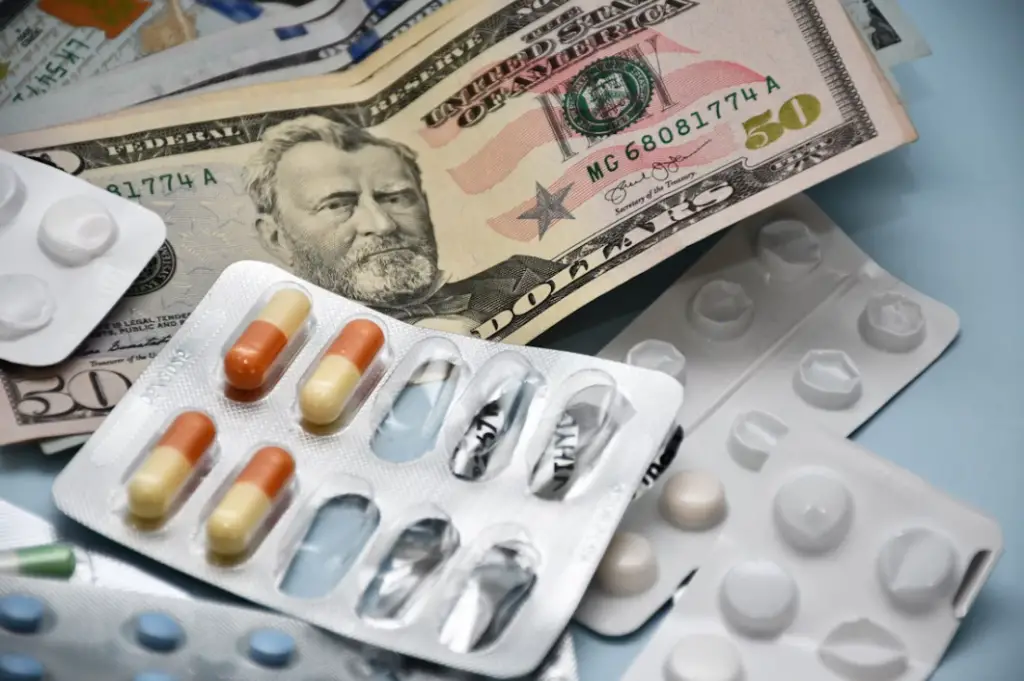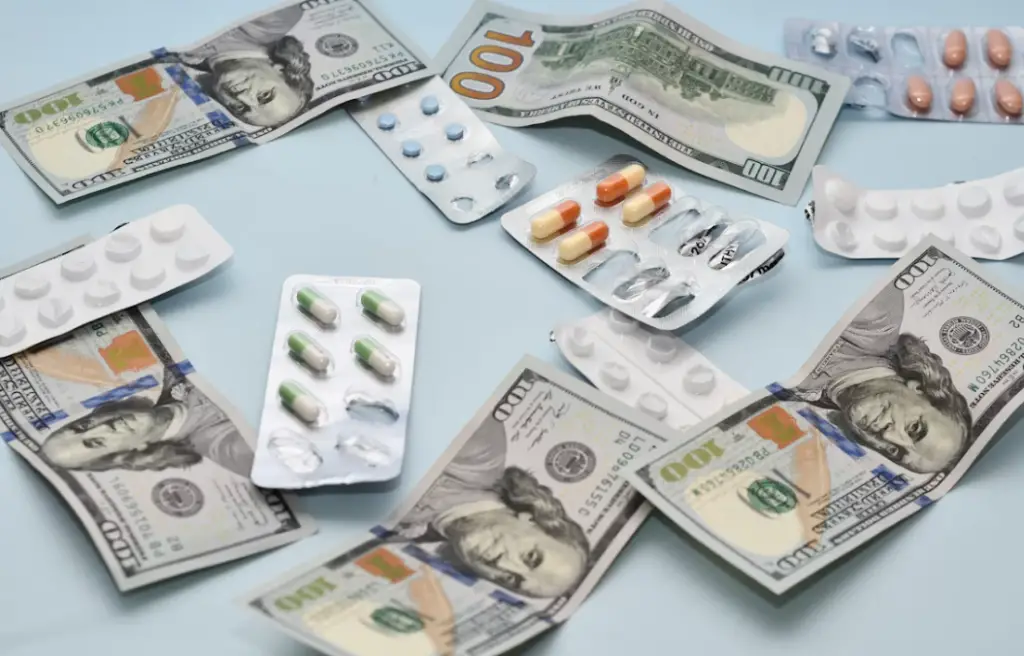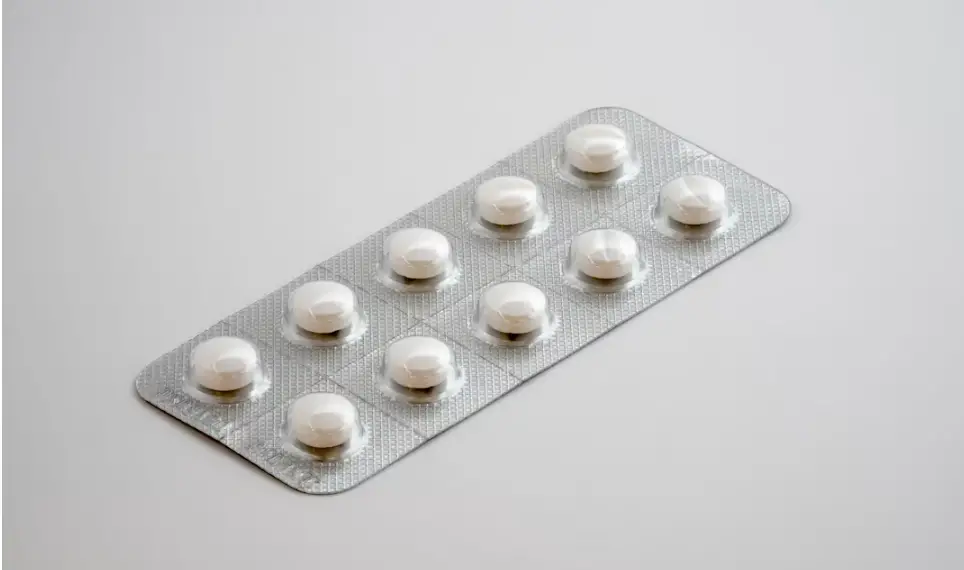Are you struggling to afford your medications every month? Medicaid prescription drug coverage can help you access affordable medications. All 50 states offer prescription help through Medicaid programs.
This comprehensive guide explains how Medicaid prescription drug benefits work for you. You’ll learn about eligibility requirements and coverage options available in your state. We’ll explore how does Medicaid cover prescriptions and what costs you might pay.
Whether you’re a senior seeking Medicaid drug coverage for seniors or need prescription help through Medicaid, this article answers your questions.
You’ll discover the key differences between Medicaid and Medicare drug coverage differences. Plus, we’ll show you exactly does Medicaid help with drug costs in 2025-2026.
Table of Contents
The Medicaid Prescription Drug Coverage

Medicaid helps millions of Americans afford their prescription medications every year. Although pharmacy coverage is optional under federal law, all states provide it as a standard benefit. Your state Medicaid program covers outpatient prescription drugs for eligible enrollees.
What Is Medicaid Prescription Drug Coverage?
Medicaid prescription drug coverage pays for medications your doctor prescribes for you. The program operates as a joint federal-state partnership across the nation. Each state manages its own Medicaid prescription drug formulary and policies. Your coverage includes both brand-name and generic medications when medically necessary.
The federal government sets basic rules for the medicaid prescription drug program. States then design their specific coverage details within these federal guidelines. This structure allows flexibility to meet your local healthcare needs effectively.
How Does Medicaid Cover Prescriptions?
Your Medicaid prescription drug benefits work through participating pharmacies in your area. You present your Medicaid card at the pharmacy when filling prescriptions. The pharmacy bills your state Medicaid program directly for covered medications.
Most states use a preferred drug list (PDL) or formulary system. This list includes medications your state Medicaid covers without prior authorization. Your doctor can request coverage for non-formulary drugs when medically necessary. The approval process typically takes 24 to 72 hours for urgent requests.
Eligibility for Medicaid Drug Coverage

Your eligibility for prescription help through Medicaid depends on multiple factors. Income limits and household size determine if you qualify for coverage. Each state sets its own specific eligibility requirements within federal guidelines.
Income Requirements for 2025-2026
States that expanded Medicaid cover adults with incomes up to 138% of the Federal Poverty Level. For the 2025-2026 period, this amounts to approximately $21,597 annually per person. Your household size affects the exact income limit that applies to you.
Non-expansion states have different income thresholds for different eligibility groups. Pregnant women, children, and parents often have higher income limits than childless adults. You should check the specific requirements for your state on its Medicaid website.
Who Qualifies for Medicaid Prescription Benefits?
You may qualify for medicaid prescription drug coverage if you meet specific criteria. Your eligibility depends on various factors, including your age, income, family status, and health conditions.
Groups That Typically Qualify:
- Low-income pregnant women receive coverage in all states through Medicaid programs
- Children in low-income families qualify through Medicaid or CHIP programs
- Seniors aged 65 and older with limited income can access coverage
- People with disabilities qualify regardless of age when meeting income requirements
- Parents and caretaker relatives may be eligible based on state-specific eligibility rules
Special Coverage for Seniors
Medicaid drug coverage for seniors provides essential access to medication for older adults. Many seniors qualify for both Medicare and Medicaid, a condition known as dual eligibility status. Your dual eligibility gives you comprehensive prescription drug coverage through both programs.
Medicare Part D covers your prescription drugs when you have Medicare only. However, Medicaid helps pay your Medicare Part D premiums and cost-sharing amounts. This dual coverage significantly reduces your out-of-pocket medication costs in 2025-2026.
Costs and Copayments

Does Medicaid help with drug costs through reduced copayments and fees? Yes, your Medicaid prescription drug coverage includes very low or no copayments. Federal law limits how much states can charge you for prescriptions.
Medicaid Prescription Drug Copay Amounts
Your copayment for generic drugs typically ranges from $0 to $4 per prescription. Brand-name medications may cost you between $0 and $8 per prescription. However, many states charge no copayments at all for Medicaid members.
Certain groups are exempt from paying copayments under federal Medicaid rules in all states. Pregnant women receive all prescriptions without any copayment requirements throughout their pregnancy. Children under 18 also receive medications without copayments in most states. Emergency medications and family planning drugs are always available free of charge to all members.
Your total monthly copayments cannot exceed 5% of your household income. This protection prevents medication costs from becoming an unmanageable financial burden. States must track your copayments and stop charging when you reach this limit.
State-by-State Copayment Comparison
Different states implement varying copayment structures for their Medicaid prescription drug programs. Some states charge no copayments at all for any medications. Other states implement small copayments based on the type and cost of the drug.
Below is a comprehensive comparison of copayment policies across all 50 states. This information reflects policies for the 2025-2026 period, based on available data from the state Medicaid program.
Important Note: Copayment amounts and policies are subject to change regularly. Always verify current information with your state Medicaid office or visit your state’s official Medicaid website for the most up-to-date details.
| State | Generic Drug Copay | Copay Policy Notes | State Medicaid Website |
| Alabama | $0.50 – $3.00 | Varies by drug type | medicaid.alabama.gov |
| Alaska | $0 | No copayments | dhss.alaska.gov/dhcs |
| Arizona | $0 | No copayments for most members | azahcccs.gov |
| Arkansas | $0.50 – $3.00 | Limited copayments | humanservices.arkansas.gov |
| California | $0 | No copayments | dhcs.ca.gov |
| Colorado | $0 | No copayments | hcpf.colorado.gov |
| Connecticut | $0 – $3.65 | Income-based copayments | portal.ct.gov/dss |
| Delaware | $0 – $3.00 | Varies by coverage group | dhss.delaware.gov |
| Florida | $0 – $3.00 | Limited copayments apply | mymedicaid-florida.com |
| Georgia | $0.50 – $3.00 | Copayments for certain drugs | medicaid.georgia.gov |
| Hawaii | $0 | No copayments | medquest.hawaii.gov |
| Idaho | $1.00 – $3.00 | Varies by drug category | healthandwelfare.idaho.gov |
| Illinois | $0 | No copayments | hfs.illinois.gov |
| Indiana | $0 – $4.00 | Varies by plan type | in.gov/medicaid |
| Iowa | $0.50 – $3.00 | Limited copayments | dhs.iowa.gov |
| Kansas | $0 – $2.00 | Minimal copayments | kancare.ks.gov |
| Kentucky | $1.00 – $4.00 | Varies by drug tier | chfs.ky.gov |
| Louisiana | $0.50 – $3.00 | Copayments apply selectively | ldh.la.gov/medicaid |
| Maine | $0 – $3.90 | Income-based copayments | maine.gov/dhhs |
| Maryland | $0 – $3.00 | Limited copayments | health.maryland.gov/mmcp |
| Massachusetts | $0 – $3.65 | Copayments for some groups | mass.gov/masshealth |
| Michigan | $0 – $4.00 | Varies by enrollment category | michigan.gov/mdhhs |
| Minnesota | $0 – $3.00 | Limited copayments | mn.gov/dhs |
| Mississippi | $0.50 – $3.00 | Copayments for certain members | medicaid.ms.gov |
| Missouri | $0.50 – $3.00 | Varies by drug type | dss.mo.gov/mhd |
| Montana | $0 | No copayments | dphhs.mt.gov |
| Nebraska | $0 – $3.00 | Minimal copayments | dhhs.ne.gov/medicaid |
| Nevada | $0 | No copayments | dhcfp.nv.gov |
| New Hampshire | $1.00 – $3.00 | Limited copayments | dhhs.nh.gov |
| New Jersey | $0 – $5.00 | Varies by coverage type | nj.gov/humanservices/dmahs |
| New Mexico | $0 | No copayments | hsd.state.nm.us |
| New York | $0 | No copayments | health.ny.gov/medicaid |
| North Carolina | $0 – $3.00 | Limited copayments | medicaid.ncdhhs.gov |
| North Dakota | $0.50 – $3.00 | Copayments for some drugs | nd.gov/dhs/medicaid |
| Ohio | $0 – $4.00 | Varies by drug category | medicaid.ohio.gov |
| Oklahoma | $0.50 – $3.00 | Limited copayments | okhca.org |
| Oregon | $0 | No copayments | oregon.gov/oha/hsd |
| Pennsylvania | $0 – $3.00 | Limited copayments | dhs.pa.gov/ma |
| Rhode Island | $1.00 – $3.65 | Copayments for certain groups | eohhs.ri.gov |
| South Carolina | $0.50 – $3.00 | Varies by drug type | scdhhs.gov |
| South Dakota | $0.50 – $3.00 | Limited copayments | dss.sd.gov/medicaid |
| Tennessee | $0.50 – $3.00 | Copayments for some members | tn.gov/tenncare |
| Texas | $0 – $3.00 | Varies by eligibility group | hhs.texas.gov/medicaid |
| Utah | $0 – $4.00 | Varies by drug tier | medicaid.utah.gov |
| Vermont | $0 | No copayments | dvha.vermont.gov |
| Virginia | $0 – $3.65 | Limited copayments | coverva.org |
| Washington | $0 | No copayments | hca.wa.gov/apple-health |
| West Virginia | $0.50 – $3.00 | Copayments for certain drugs | dhhr.wv.gov/bms |
| Wisconsin | $0 – $3.00 | Limited copayments | dhs.wisconsin.gov/medicaid |
| Wyoming | $0.50 – $3.00 | Varies by drug type | health.wyo.gov/medicaid |
Source: Information compiled from state Medicaid programs and Medicaid.gov State Resources. Verify current copayment amounts with your state Medicaid office.
What Medications Does Medicaid Cover?

Your Medicaid prescription drug coverage includes a wide range of medications. Federal law requires states to cover specific drug categories for all members of their Medicaid programs. These essential medications address common health conditions and help manage chronic diseases.
Required Drug Coverage Categories
All state Medicaid programs are required to cover specific types of medications under federal regulations. Your coverage includes essential medications for managing chronic and acute health conditions.
Medications Your Medicaid Covers:
- Mental health medications for depression, anxiety, and bipolar disorder treatments
- Heart disease drugs, including blood pressure and cholesterol management medications
- Diabetes medications and insulin for blood sugar control and disease management
- Pain management medications are used when medically necessary for your specific health condition
- Antibiotics and infection treatment drugs are covered without restrictions in most cases
- Asthma and respiratory medications for breathing conditions and lung disease management
Medications Not Typically Covered
Some medication categories have limited or no coverage under Medicaid prescription drug programs. Understanding these exclusions helps you plan your healthcare needs and manage your medication costs effectively.
Medications Usually Not Covered:
- Weight loss drugs are generally excluded unless medically necessary for specific conditions
- Cosmetic medications and treatments are excluded from most state formularies nationwide
- Fertility drugs with minimal coverage require special approval processes
- Adult cough and cold symptom medications may not receive coverage
- Your state’s specific formulary rules restrict certain over-the-counter medicines
Prior Authorization Requirements
Some medications require prior authorization before your pharmacy can fill the prescription. Your doctor submits medical justification explaining why you need the specific medication. The state Medicaid program reviews the request and approves or denies coverage.
Prior authorization typically applies to expensive brand-name drugs with generic alternatives available. Certain controlled substances and specialty medications also require this additional approval step. The process protects against inappropriate use while ensuring access to necessary treatments.
Medicaid and Medicare Drug Coverage Differences

Understanding Medicaid and Medicare drug coverage helps you maximize your benefits. These two programs serve different populations and operate under distinct rules. Your coverage options depend on which program or programs you qualify for.
Medicare Part D vs. Medicaid Prescription Coverage
Medicare Part D offers prescription drug coverage to individuals aged 65 and older. You must enroll in a separate Part D plan and pay monthly premiums. Medicare Part D premiums average $34.50 monthly for standalone plans in 2025-2026.
Medicaid prescription drug coverage comes automatically with your Medicaid enrollment in all states. You pay no separate premium for your prescription drug benefits through Medicaid. Your copayments are significantly lower than Medicare Part D cost-sharing requirements.
Dual Eligibility Benefits
You have dual eligibility when you qualify for both Medicaid and Medicare simultaneously. Your Medicare Part D plan covers your prescriptions as the primary payer. Medicaid then pays your Part D premiums, deductibles, and copayments as secondary coverage.
Dual eligible beneficiaries pay no more than $4.80 per prescription in 2025-2026. These significant savings make medications much more affordable for low-income seniors. Your combined coverage ensures you never face unmanageable prescription drug costs.
Extra Help Program
The Medicare Extra Help program assists low-income Medicare beneficiaries with prescription costs. You may automatically qualify if you receive Medicaid alongside your Medicare coverage. Extra Help pays your Part D premiums and substantially reduces your copayments.
Your Extra Help benefits allow you to change Part D plans anytime during the year. Most Medicare beneficiaries can only switch plans during specific enrollment periods annually. This flexibility helps you find the best coverage for your medication needs.
How to Apply for Medicaid Prescription Coverage

Applying for prescription help through Medicaid starts with determining your eligibility in your state. Each state operates its own application process with specific requirements and documentation needs. You can apply online, by phone, by mail, or in person.
Application Process Steps
Visit your state’s Medicaid website to begin your application for medicaid prescription drug coverage. You’ll need to provide information about your household income and family size. Gather documents proving your identity, residency, and income before starting the application.
Complete the application form with accurate information about your current circumstances and needs. Submit required documentation, including pay stubs, tax returns, and identification documents. Your state will review your application and request additional information if needed.
Most states process applications for regular Medicaid coverage within 45 days. Emergencies may receive expedited processing in as little as 10 days. You’ll receive a written notice explaining the decision about your coverage eligibility.
Required Documentation
You must provide a valid form of identification, such as a driver’s license, state ID, or passport. Gathering these documents before starting your application saves time and speeds processing.
Documents You’ll Need to Provide:
- Social Security numbers are required for all household members applying for coverage
- Proof of residency, like utility bills, lease agreements, or mortgage statements
- Income verification, including recent pay stubs, W-2 forms, or tax returns
- Self-employment records showing business income and expense documentation for independent workers
- Bank statements may be requested to verify financial assets and resources
Where to Get Help with Applications
Community organizations and healthcare facilities often provide free application assistance in your area. Professional help ensures that your application is complete and accurate, facilitating faster processing and review.
Application Assistance Resources Available:
- Certified application counselors help you complete forms and gather necessary documentation
- Local Department of Social Services offices offer in-person assistance with applications
- State Medicaid office phone support is listed on Medicaid.gov
- Healthcare navigators at community health centers provide free enrollment assistance services
- Hospital financial counselors help patients apply for Medicaid coverage during visits
State Pharmaceutical Assistance Programs (SPAPs)

Some states operate additional programs beyond standard Medicaid prescription drug coverage benefits. State Pharmaceutical Assistance Programs offer additional support with medication costs. These programs supplement your Medicaid coverage or assist those not qualifying for Medicaid.
States with SPAPs in 2025-2026
Currently, several states maintain qualified State Pharmaceutical Assistance Programs for their residents. These programs offer additional prescription drug benefits beyond what Medicaid alone provides. Eligibility requirements vary significantly between different state programs and assistance levels.
Delaware, Maine, Maryland, Massachusetts, and Nevada currently operate comprehensive SPAP programs. New Jersey, New York, Pennsylvania, Rhode Island, and Vermont also maintain active programs. Wisconsin rounds out the list of states with qualified SPAP programs today.
How SPAPs Work with Medicaid
Your SPAP benefits coordinate with your Medicaid prescription drug coverage when applicable. The programs work together to reduce your total out-of-pocket medication expenses. SPAPs may cover medications not included in your state’s Medicaid formulary.
Some SPAPs help pay Medicaid copayments, eliminating all medication costs for participants. Others provide gap coverage when you exceed certain spending thresholds during the year. Your combined benefits ensure comprehensive prescription drug coverage through multiple program layers.
Frequently Asked Questions
Does Medicaid help with prescription costs?
Yes, Medicaid helps with prescription costs through comprehensive drug coverage programs. You receive coverage for thousands of medications at little or no cost. Your copayments typically range from $0 to $4 for generic medications. Brand-name drugs may cost you between $0 and $8 per prescription.
How much is the copay for prescription drugs for Medicaid?
The copay for prescription drugs through Medicaid varies by state and the type of medication being prescribed. Most states charge between $0 and $4 for generic medications per prescription. Brand-name drugs typically cost $0 to $8 per prescription as your copayment. Children, pregnant women, and emergency medications are always eligible for zero copayment requirements.
What medications aren’t covered by Medicaid?
Medications not covered by Medicaid include most weight loss drugs and cosmetic treatments. Fertility drugs are often not covered in most state programs nationwide. Over-the-counter medicines for cough and cold may not be covered for adults. Experimental drugs and non-FDA-approved medications are typically excluded from coverage.
Which pays for prescriptions, Medicare, or Medicaid?
Both Medicare and Medicaid cover prescription medications, depending on your eligibility and coverage. Medicare Part D covers prescription medications for individuals aged 65 and older, as well as those with disabilities. Medicaid covers prescriptions for low-income individuals, families, and children of all ages.
Conclusion
Medicaid prescription drug coverage provides essential access to medication for millions of Americans across the nation. You can access affordable medicines through your state’s Medicaid program with minimal costs.
All 50 states offer comprehensive prescription help through Medicaid for eligible residents today. Your coverage includes thousands of medications, with copayments typically ranging from $0 to $4.
Understanding how does Medicaid cover prescriptions helps you maximize your benefits effectively. Visit Medicaid.gov or your state Medicaid website to learn more. Apply today to start receiving prescription help through Medicaid for your healthcare needs.
